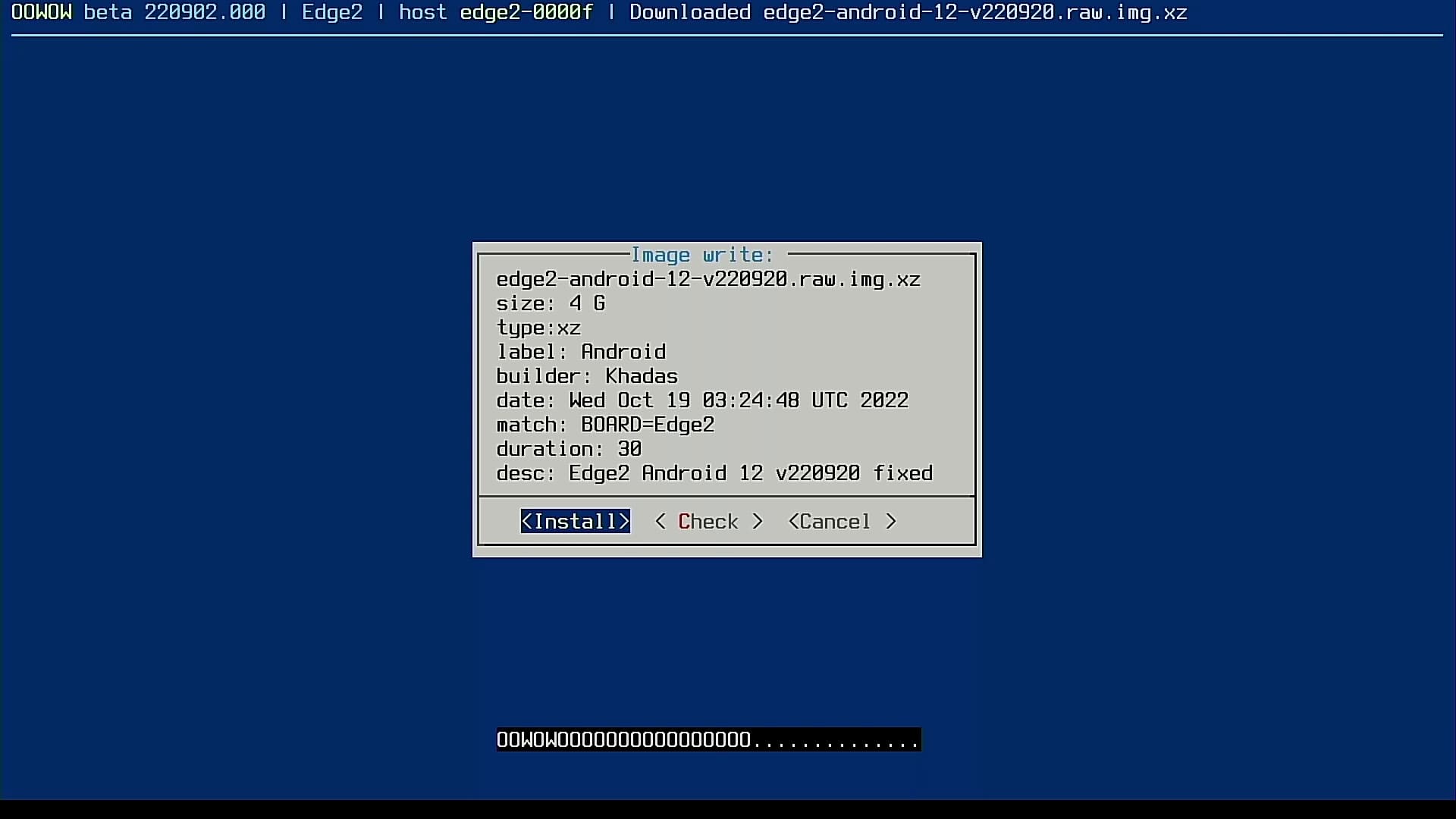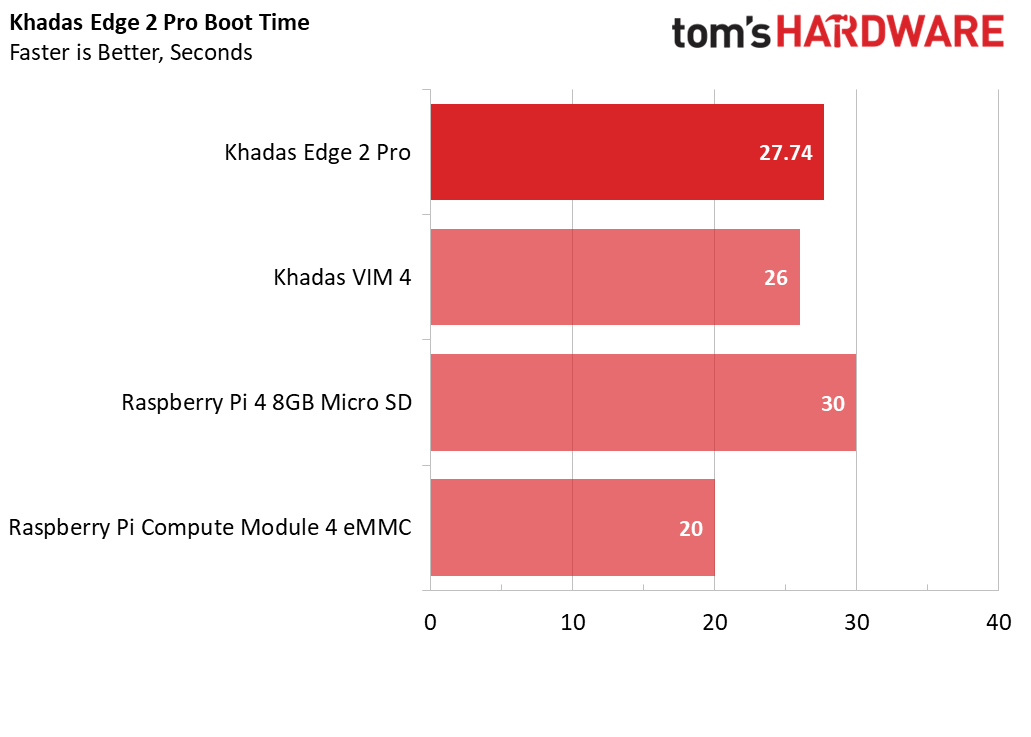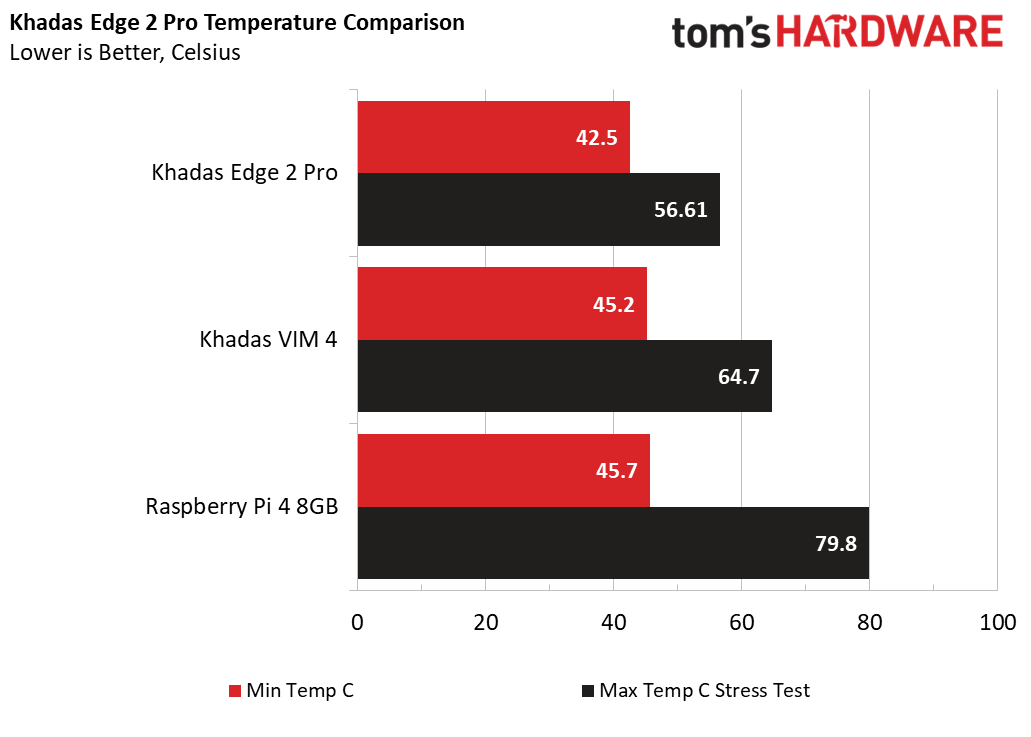Tom's Hardware Verdict
Faster than the Raspberry Pi 4, but it comes at a cost. A great low power desktop replacement, machine learning and entertainment device from a company with a good SBC pedigree.
Pros
- +
For factor is great
- +
Very powerful
- +
Impressive Android performance
- +
4K YouTube with Android
- +
Onboard eMMC
Cons
- -
16GB is Expensive
- -
No Ethernet
Why you can trust Tom's Hardware
Khadas has a history in single board computers. The company makes high-spec, high cost boards that outperform the Raspberry Pi in almost every area. The Raspberry Pi may still hold the throne, but there are many challengers seeking to end its reign.
The Khadas Edge 2 Pro comes in two configurations, a Maker kit and an Arm PC kit. The Maker kit is the bare board which comes in a $199 model with 8GB of RAM and 32GB of eMMC 5.1 storage. For $100 ($299) more you can get the Pro version, with 16GB of RAM and 64GB of eMMC 5.1. The Arm PC version costs an additional $30 more and provides a rather lovely looking case. These prices are either side of the VIM 4 which weighs in at $239.
The key difference between the Edge 2 Pro and the VIM 4 is the CPU. Contained in the Rockchip RK3588S SoC is a quad core Arm Cortex A76 running at 2.25 GHz, and an Arm Cortex A55 running at 1.8 GHz. This isn’t a big difference from the VIM 4 but hidden in the Soc is a built-in 6 TOPS Performance NPU. Which supports deep learning frameworks such as TensorFlow, PyTorch etc.
It may look the same as the VIM 4, and be smaller than a Raspberry Pi 4, but does it have the “edge” over these boards? For that we need to put it on the bench and take it for a test drive.
Khadas Edge 2 Pro Hardware Specifications
| Header Cell - Column 0 | Khadas Edge 2 Pro | Khadas VIM 4 |
|---|---|---|
| SoC | Rockchip RK3588S | Amlogic A311D2 |
| 2.25GHz Quad Core ARM Cortex-A76 + 1.8GHz Quad Core Cortex-A55 CPU | 2.2GHz Quad core ARM Cortex-A73 and 2.0GHz Quad core Cortex-A53 CPU | |
| ARM Mali-G610 MP4 GPU up to 1GHz | ARM Mali-G52 MP8(8EE) GPU up to 800MHz | |
| Build-in 6 TOPS Performance NPU | 8K 24fps decoder & low latency 4K H.264/H2.65 50fps encoder | |
| 4K@60fps AV1, 8K@60fps H.265 Decoding | Support multi-video decoder up to 4Kx2K@60fps+1x1080P@60fps | |
| 8K@30fps H.264/H.265 Encoding | HDR10, HDR10+, HLG and PRIME HDR video processing | |
| HDR, HDR10, HLG Video Processing | TrustZone based security for DRM video streaming | |
| RAM | 8 / 16GB LPDDR4X | 8GB LPDDR4X 2016MHz, 64 bit |
| 2112MHz, 64-bit | ||
| Storage | 32 / 64GB eMMC 5.1 | 32GB eMMC 5.1 |
| Micro SD card | ||
| M.2 NVMe via external breakout board (sold separately) | ||
| Ports | 1 x USB 2 | 1 x USB 2 |
| 1 x USB 3 | 1 x USB 3 | |
| 1 x HDMI 2.1 | 1 x HDMI 2.1 | |
| 1 x USB-C PD Only | Gigabit Ethernet | |
| 1 x USB-C PD, USB 3.1, DP 1.4 | 1 x USB Type C (USB 2 OTG and USB PD) | |
| Wi-Fi / Bluetooth | Ampak AP6275P | AP6275S Wi-Fi 6 Module 802.11a/b/g/n/ac/ax, 2T2R MIMO with RSDB [2] |
| 2T2R Wi-Fi 6, IEEE 802.11 ax/ac/a/b/g/n | Bluetooth 5.1 | |
| Bluetooth 5.0 | ||
| GPIO | FPC Connections | 40 pin GPIO not Raspberry Pi compatible |
| Pogo pads (: I2C, UART, SPI, SDMMC, I2S, ADC, PWM, USB | CPU: USB, I2C, I2S, SPDIF, UART, PWM, ADC, GPIO MCU: SWCLK, SWDIO | |
| MCU: SWDIO, SWCLK, UART) | ||
| Power | USB-C PD 12V 2A (24W) | USB-C 9 - 20V (12V in our tests) |
| OS Support | Ubuntu 22.04 | Ubuntu 22.04 |
| Android 12 | Android 11 | |
| Dimensions | 82.0 x 57.5 x 5.7 mm | 82.0 x 58.0 x 11.5 mm |
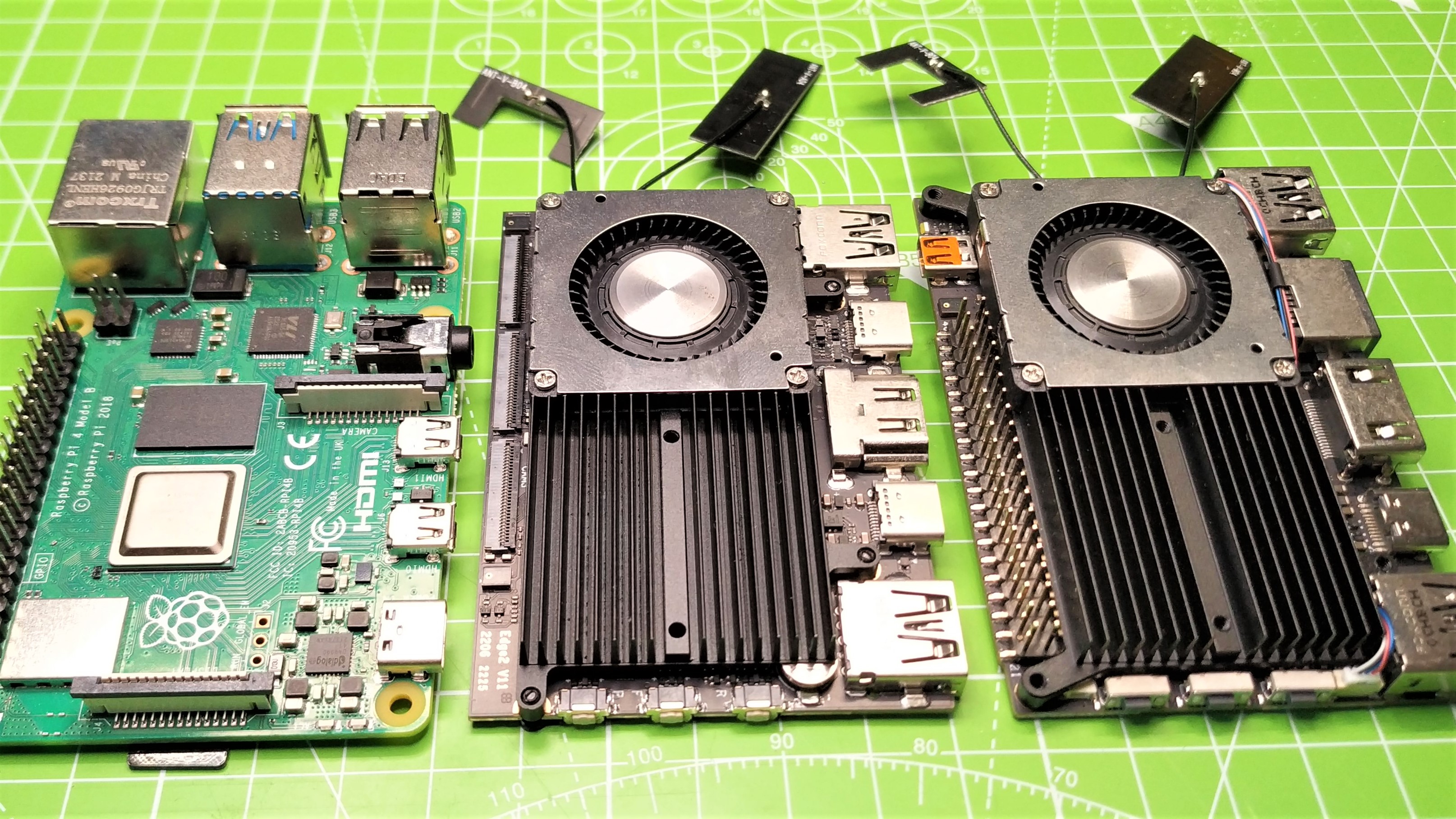
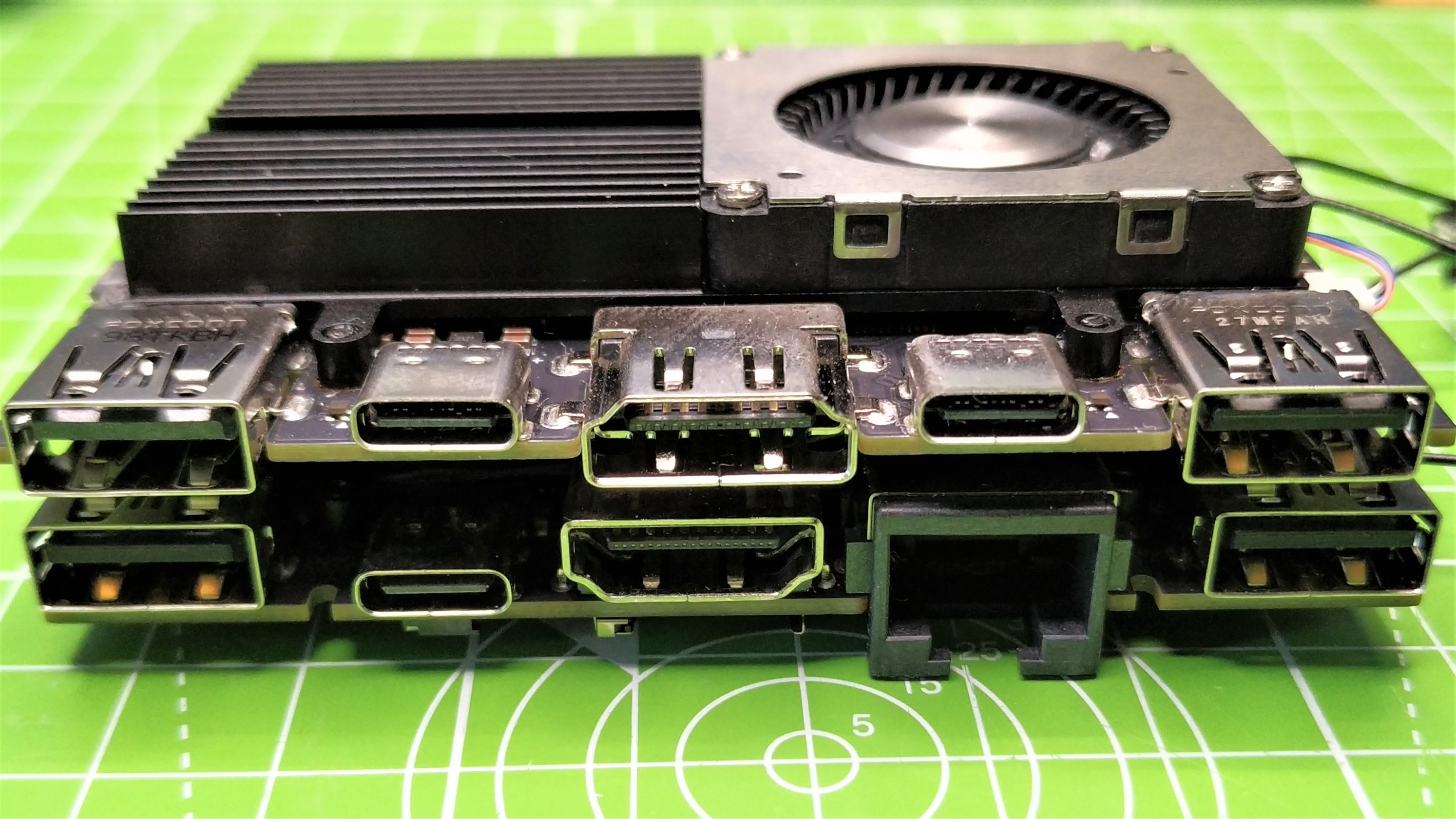
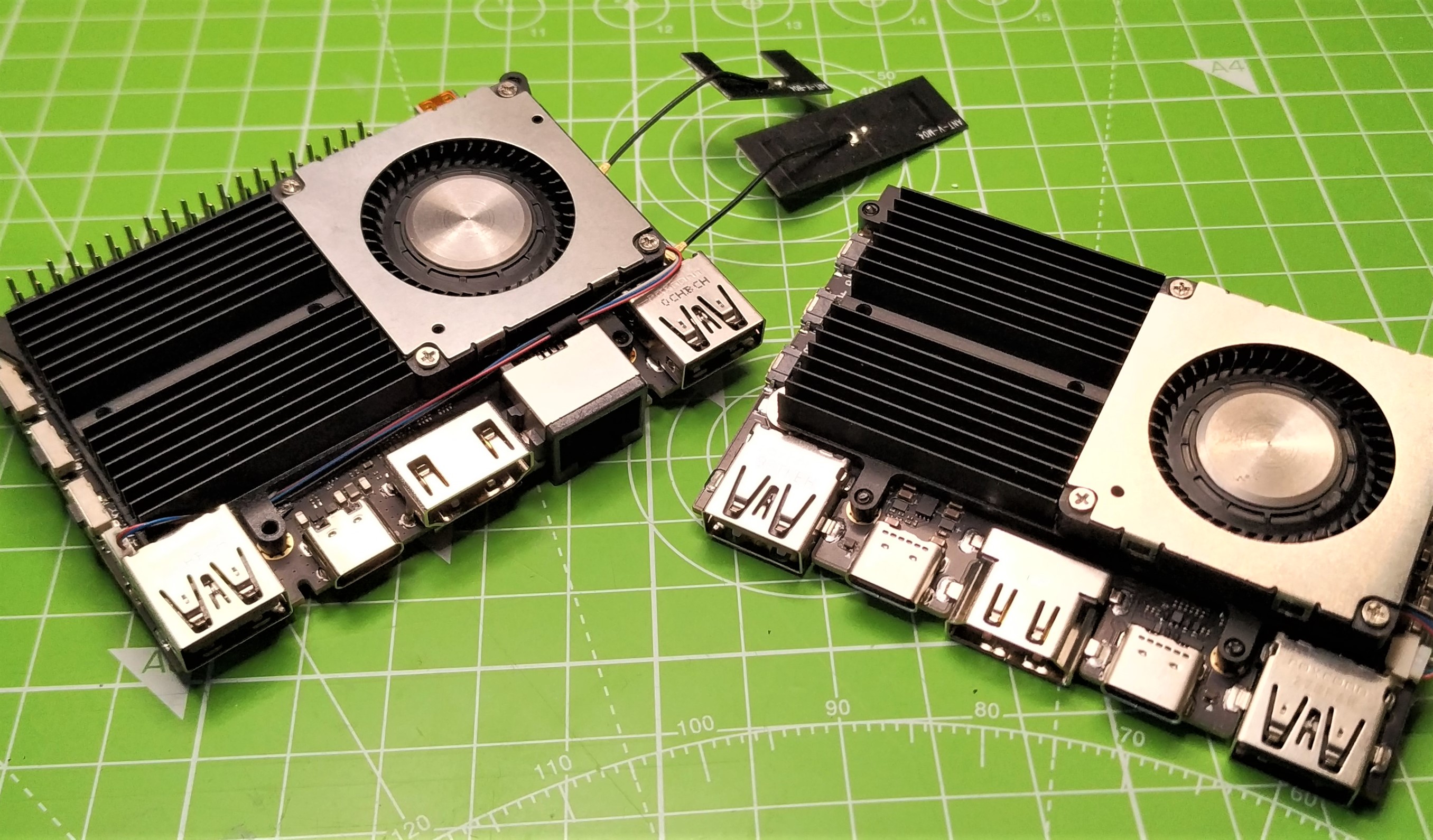
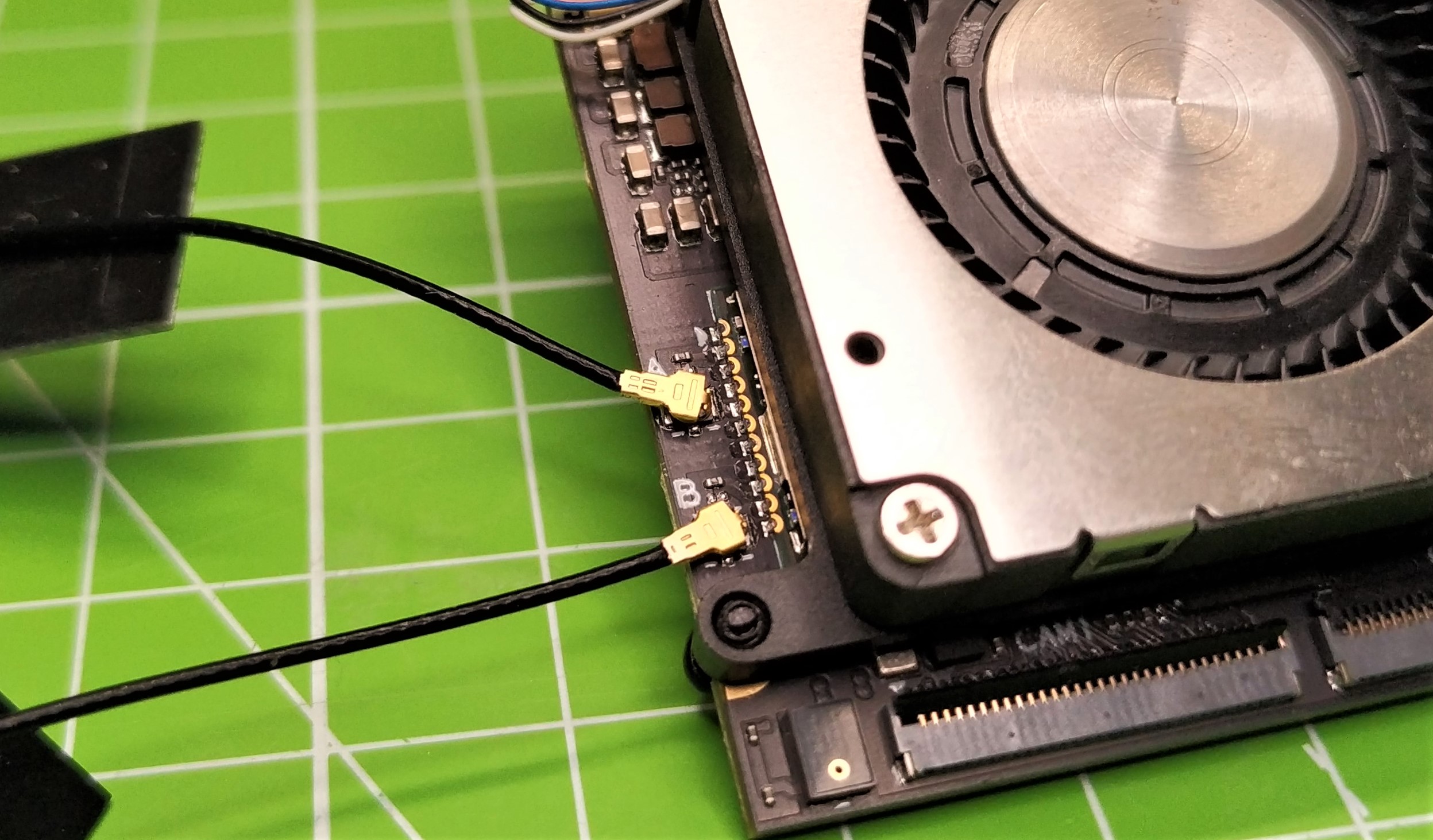
At a glance, the Khadas Edge 2 Pro follows the design language of the VIM 4, with ports placed along the long edge of the board. The key difference is the omission of an Ethernet port, instead the Edge 2 Pro receives an additional USB-C port. This USB-C port can handle power delivery (PD), USB 3 (aka USB 3.2), and DP 1.4 which can output 4K60. The dedicated HDMI 2.1 port supports upto 8K60, but that is a feature we cannot test due to a lack of 8K display.
Along the other long edge of the board we see a series of FPC connections labelled CAM1,2,3 which can be used with compatible cameras. We tried to connect a Raspberry Pi camera but the flat flex cable was a fraction too wide, as were others in our kit.
Other omissions are the lack of an NVMe connection, not a great loss as in our tests we were unable to install an OS to NVMe, but it was useful storage. And there is no GPIO on the Edge 2 Pro. Well, there is, but they take the form of seven pogo pads behind the HDMI port and a FFC connection on the underside of the board. If you have the means to breakout these connections, then you should be able to use them via a device tree overlay. We were unable to test these connections for this review.
Get Tom's Hardware's best news and in-depth reviews, straight to your inbox.
The first step to using the Khadas Edge 2 Pro is to install an operating system, and this process is super slick and follows the same process as for the VIM 4. Khadas online installer, OOWOW is baked into the board and ready to run. On first boot it will auto start, but we can enter OOWOW at any time by pressing Reset and Function on the side of the board.
Using OOWOW, we can update the list of available operating systems, which at the time of writing was Ubuntu 22.04 (desktop and server) and a version of Android 12. The interface reminds us of Raspberry Pi’s raspi-config which also uses the whiptail menu interface.
We used OOWOW to update the list of available operating systems and then performed a clean install of Ubuntu 22.04.The download took 60 seconds, and installation another 60 seconds, two minutes to download and install an OS ready for use is an impressive feat. Operating system download images are stored in RAM, then decompressed to the 32GB eMMC drive.
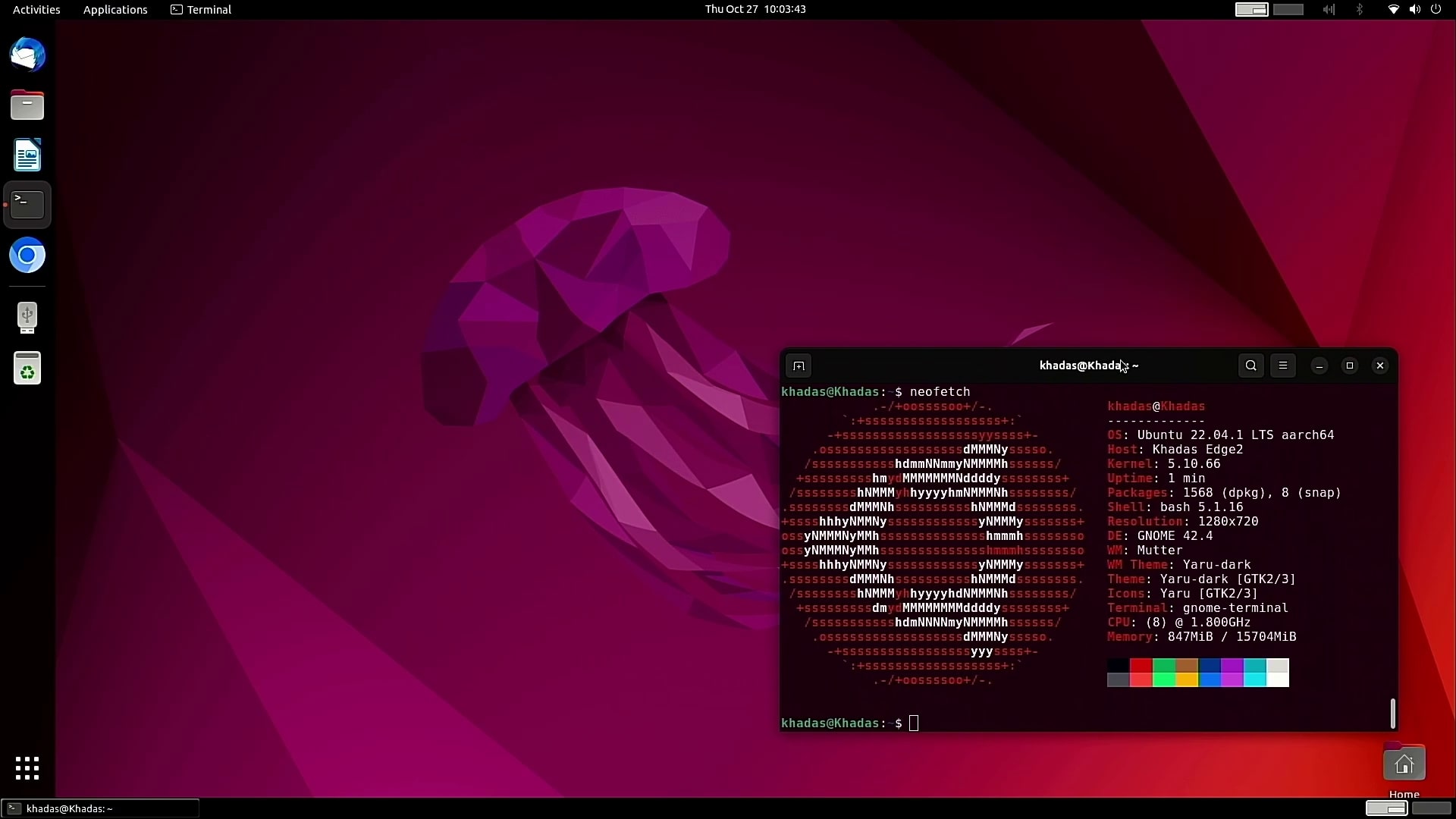


With a fresh OS installed we moved on to booting up the Edge 2 Pro for the first time. We never time the first boot as it commonly requires a few extra post-install configuration steps in order to get everything working. On the subsequent boot, the boot time is comparable to that of the VIM 4. hardly surprising as they both use eMMC 5.1 for storage. The Edge 2 Pro was slightly slower, at 27.74 seconds, compared to VIM 4’s 26 seconds. You really won’t notice the difference.
When we reviewed the Khadas VIM 4, we loved the Ubuntu user experience. It felt smooth and more like a desktop than a Raspberry Pi 4. With the extra 8GB of RAM provided in the Edge 2 Pro we really saw a difference in general performance. We tested the Edge 2 Pro for a full day, editing images in GIMP , web browsing with multiple tabs and watching YouTube videos.
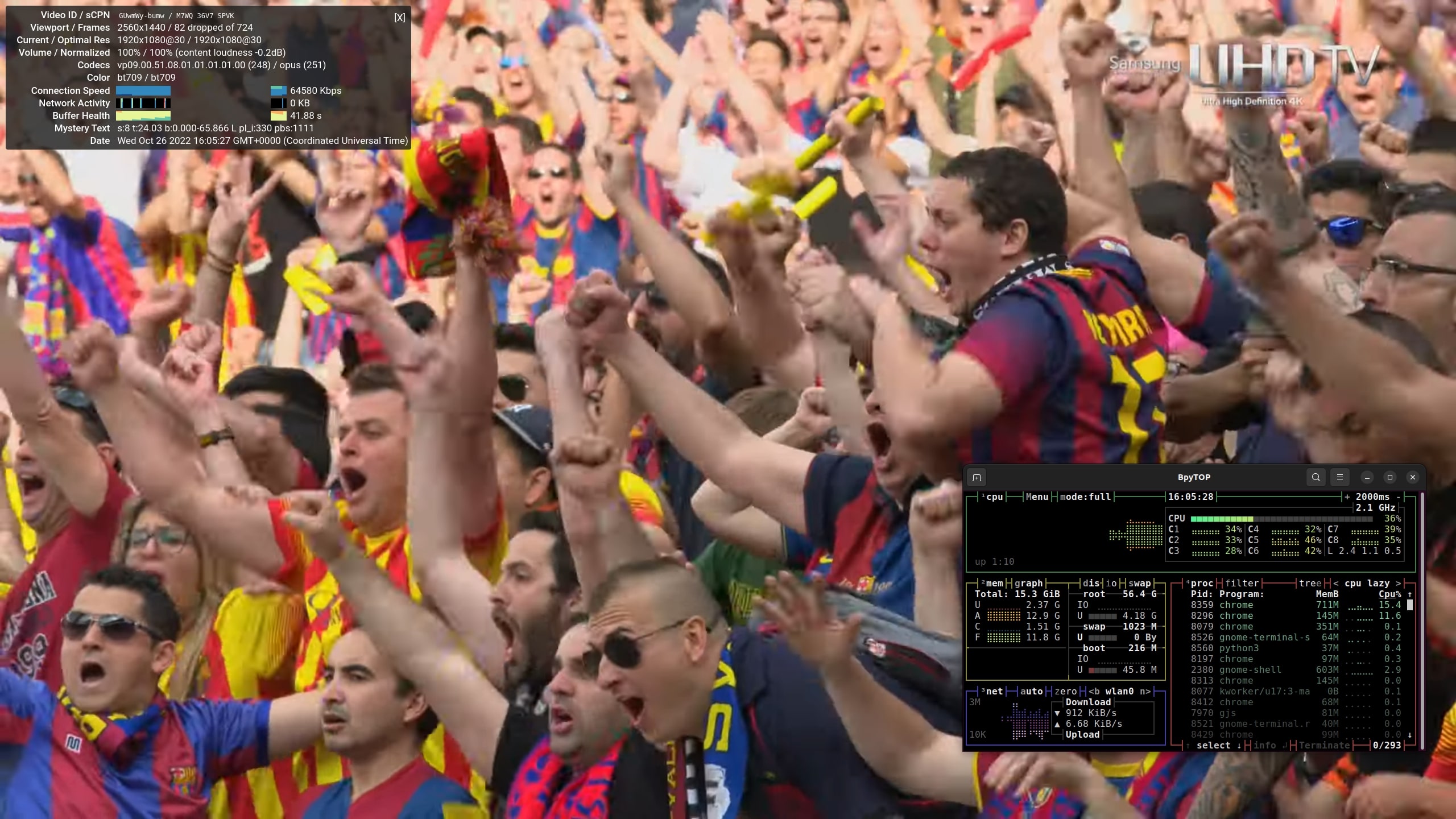
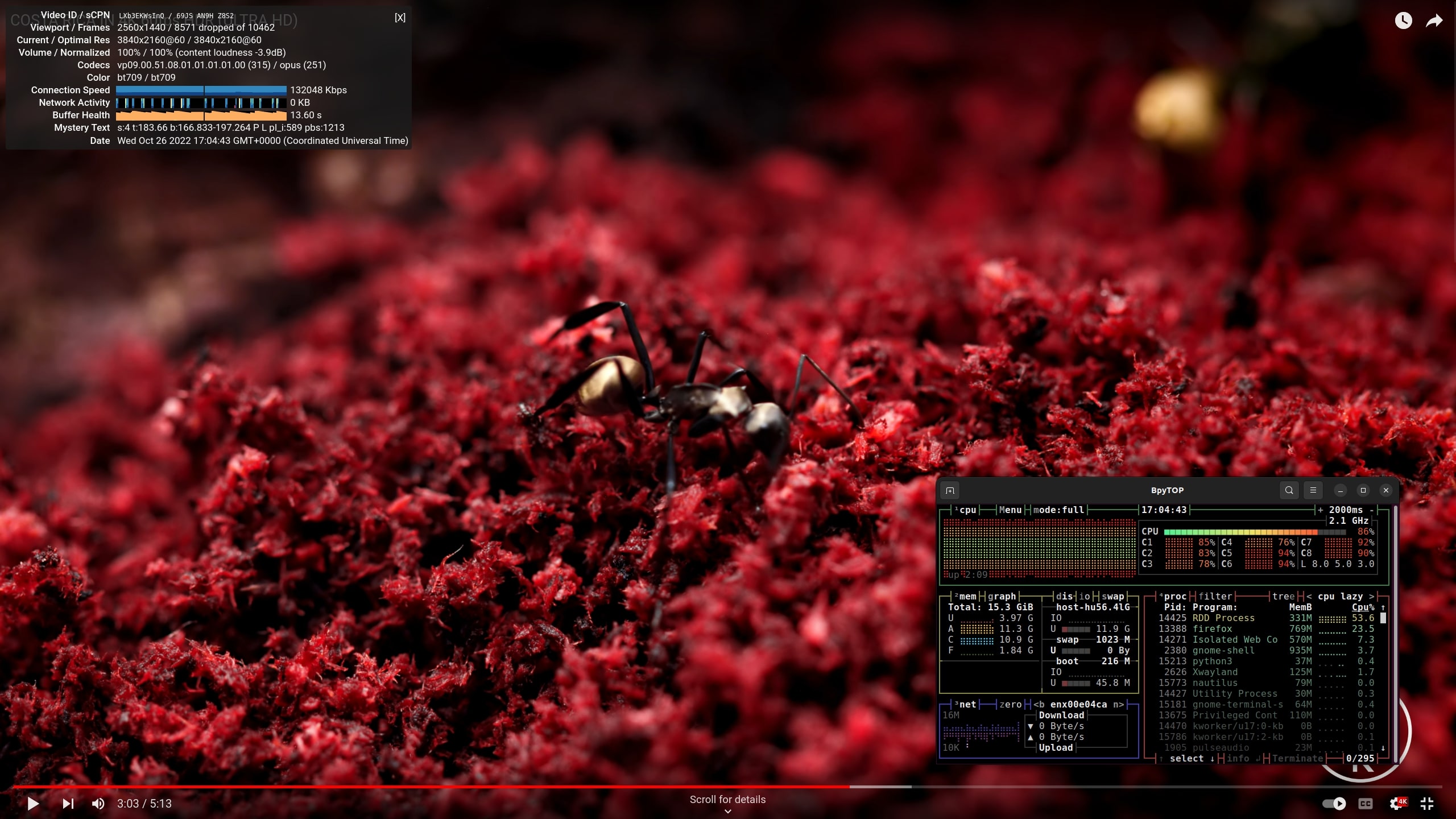


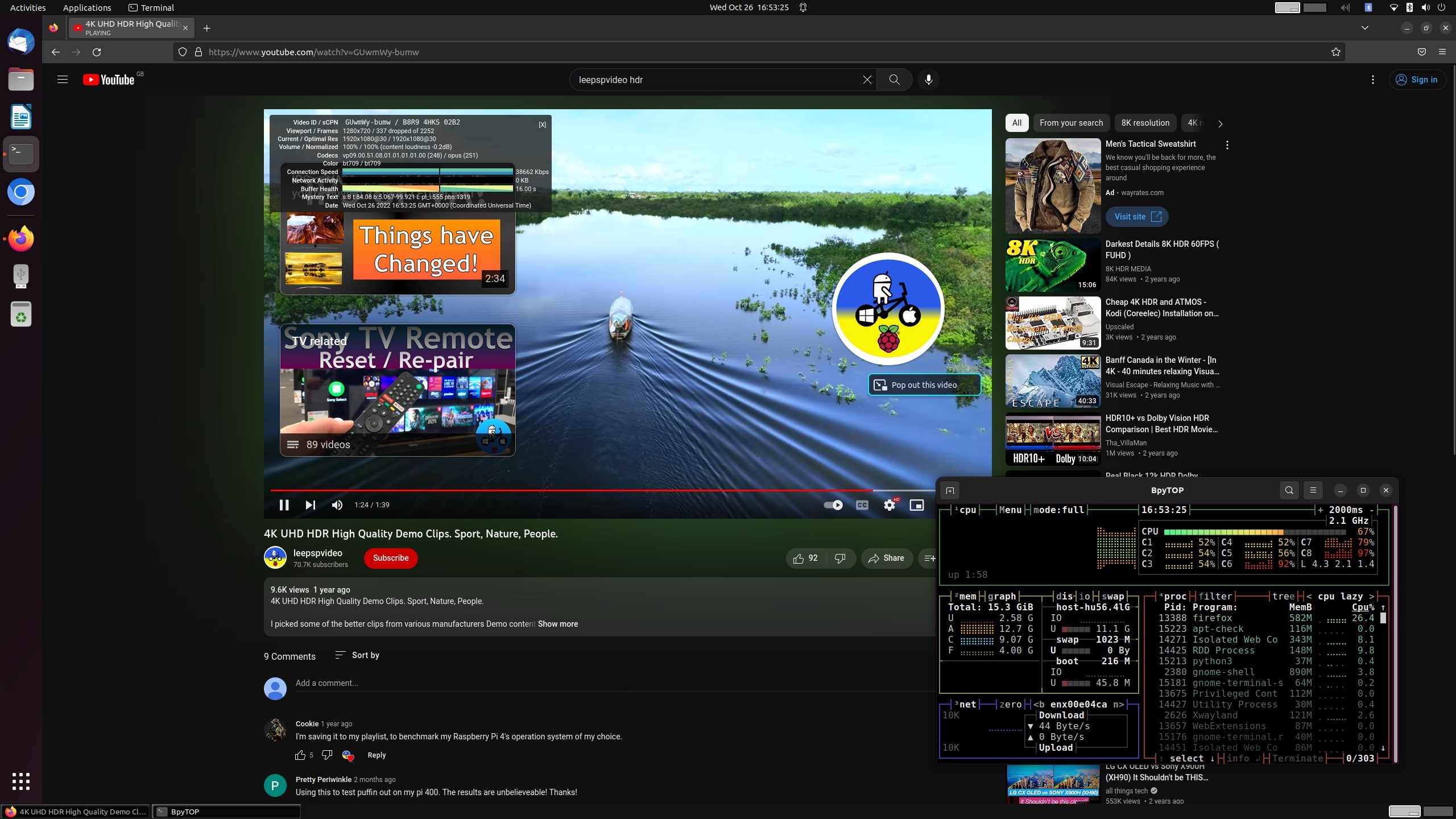
For general 1080p streaming media consumption, the Edge 2 Pro does a good job. But you will need great Wi-Fi to reduce the number of dropped frames. On our Wi-Fi 5 connection, we saw great playback but encountered 400 dropped frames from a total of 2643. We wanted to isolate the problem and so we connected a USB 3 Ethernet adapter to USB 3 port and retried the test. We saw 355 dropped frames from a total of 2511, still not great. In defence of the dropped frames, we never saw a blip or stutter in the tests, but the stats don’t lie. Playing back local media, specifically a H265 encoded 720P video was perfect. Even running two instances of the same media, the aforementioned 720P H265 and a 4K H264 version via the mpv media player didn’t stress the system out.
In our tests, we connected the Edge 2 Pro to our PinePower desktop power supply’s USB-C output and saw that the unit auto-negotiated 12V, and at idle, it pulled 0.1A, giving us a 1.2W idle power consumption. When under load for our stress tests, the unit didn’t go above 12V at 0.64A, a 7.68W power consumption.
The idle consumption is the same as the VIM 4, but under stress the VIM 4 only hit 6W, compared to the 7.68W of the Edge 2 Pro. Comparing both of Khadas’ boards to the Raspberry Pi 4 which idled at 5.1V 0.2A, a 1.02W power consumption and under stress saw a peak of 5.3V at 1.2A, 6.24W. So this tells us that the three boards have comparable power consumption despite the Khadas boards having four additional CPU cores.
Power and Temperature Tests of Khadas Edge 2 Pro
With great power comes great responsibility need for cooling. While the Raspberry Pi 4 may run without a stock cooler, Khadas’ boards need active cooling to keep all eight cores in check. The large flat heatsink and fan of the Khadas Edge 2 Pro and the VIM 4 are clear indicators that the SoC can get hot.
Our tests involved a five minute idle period then a five minute all-core CPU stress test, where the temperature was logged to an external file every second. The Edge 2 Pro happily idled at 42.5 degrees Celsius (2.5 degrees Celsius lower than the VIM 4) and under stress it hit a high of 56.61 degrees Celsius. This is an 8 degrees Celsius difference to the VIM 4, meaning that the Edge 2 Pro runs cooler.
To give the CPU a workout, we used sysbench to verify all prime numbers up to two million. We tuned the test to use eight CPU cores for the Khadas Edge 2 Pro and saw it complete the task in 10.7 seconds, a fraction slower than the VIM 4 which came in at 10.5 seconds. There is no competition between those two boards, so we have to look at the Raspberry Pi 4 8GB time of 19.9 seconds to see that the Edge 2 Pro is much faster than the Raspberry Pi 4.
Android 12 Testing
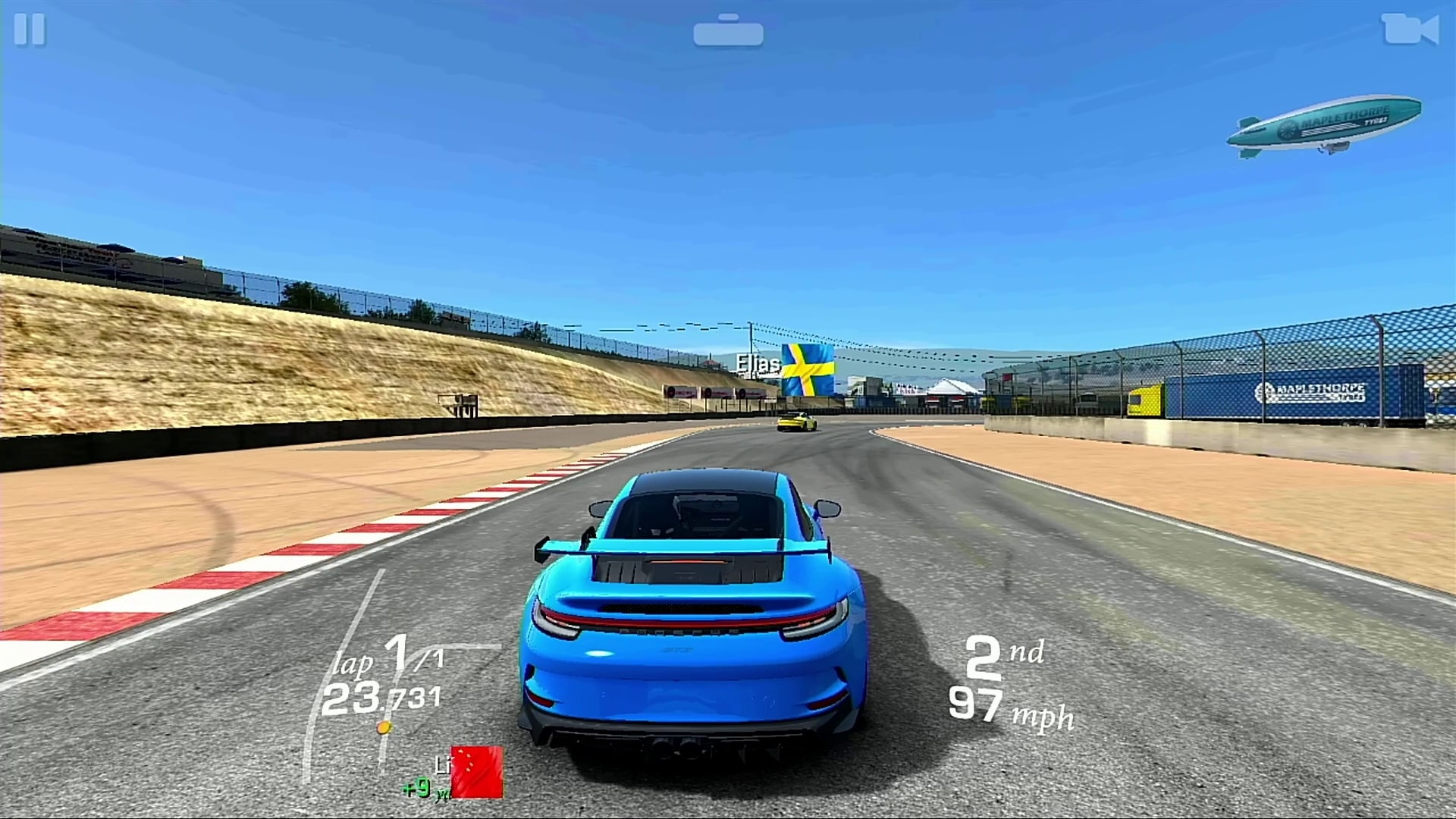
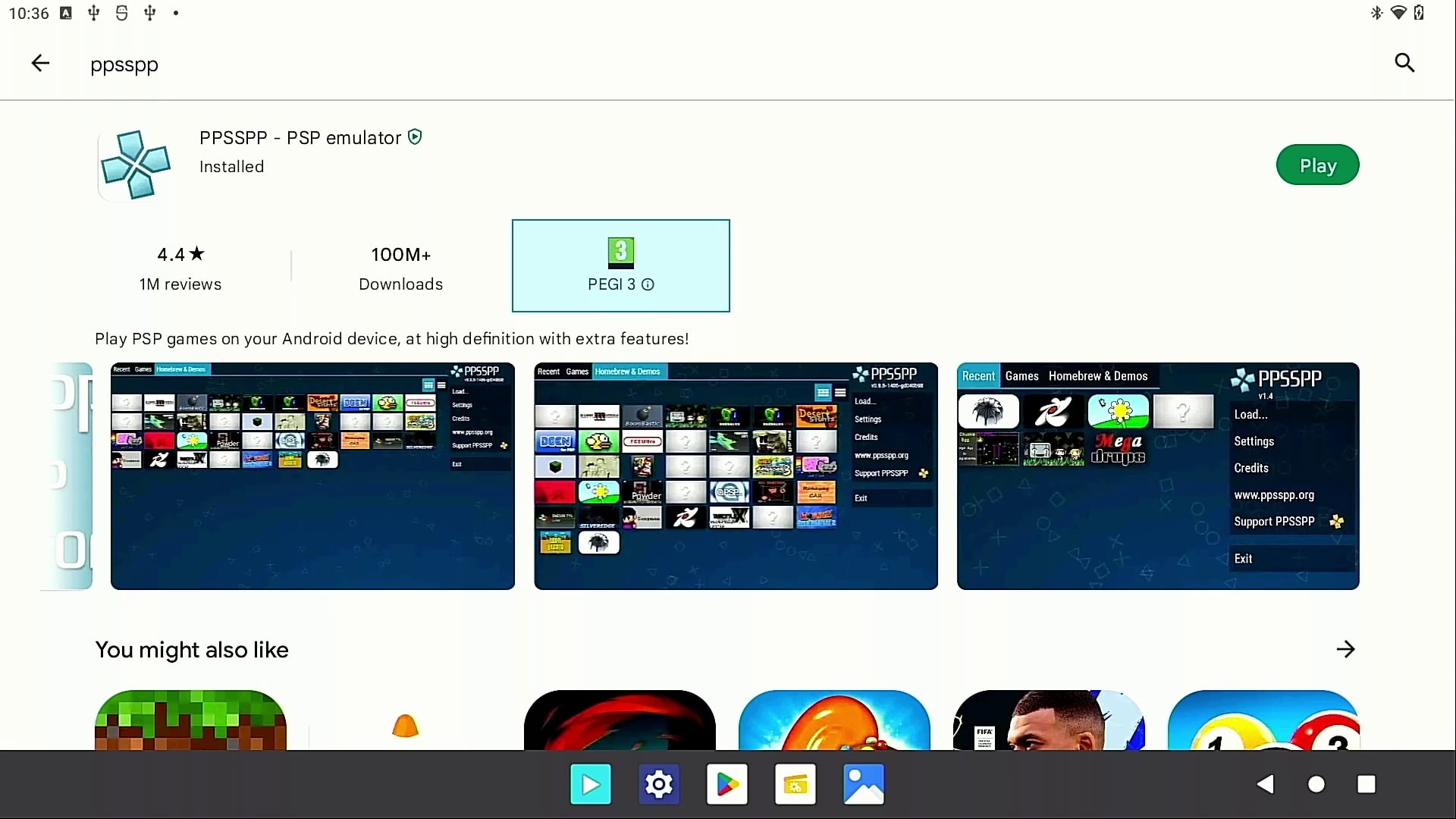


The Edge 2 Pro supports Android 12, but, from what we understand, it is only the 32-bit version, opposed to Android 11 being 64-bit on the VIM 4. Installing Android 12 via OOWOW is far too easy. After that, it is just like using an Android tablet, albeit via our television. Under the Khadas settings menu we can change the resolution and tweak board specific settings. Other than that we have access to the Google Play Store and from there we can install a myriad of apps. We installed the Android native Real Racing 3 and went for a drive, everything played well and with zero stutter.


What about emulation? We ran PPSSPP, a Sony PSP emulator along with God of War: Chains of Olympus and thought that the extra RAM and spicier CPU choice would yield a better performance than we got on the VIM 4, which turned out to be true, but with a caveat. After tweaking the render settings between OpenGL and Vulkan we were forced to repeat the configuration that was used on the VIM 4 (frameskip and 2x resolution scaling). This brought us down to 30fps, but it was solid.
Buoyed by that success we pushed the resolution scaling to 4x, and it held a constant frame rate, but only at 24fps. For PS1, SNES and other 8 and 16-bit consoles you will have no trouble playing the classics. PS2 is possible, using AetherSX2 but performance will vary on a game-by-game basis. We tested Shadow of the Colossus and found locking it to 30fps and 2x resolution scaling with OpenGL produced the best results.
General web browsing and other consumption activities work extremely well, including YouTube playback which coasts along with 1080p and 1440p streams. 4K playback was decent , but we noticed dropped frames and the YouTube app refused to show us “the stats for nerds,” which lists this information, so we had to watch a lot of 4K Costa Rican wildlife videos to be sure.
What Projects Can We Use Khadas Edge 2 Pro For?
The small form factor and the abundance of power means that the Edge 2 Pro is at home in processing heavy applications. If you have a compatible camera then with a little code you can build machine learning / computer vision projects using any language you wish. Makers wishing to use the GPIO are best served with the VIM 4
The Edge 2 Pro’s strengths come from its raw performance; it trounces the Raspberry Pi 4, which is still largely unobtainium at this time. If you are looking for a desktop replacement, advanced AI or some good retro gaming fun, then the Edge 2 Pro has the edge.
Bottom Line

Much as with the VIM 4, we like the Edge 2 Pro, and for $299 we get a lot of board. That said, opting for the Basic model, which drops the RAM down to 8GB and storage to 32GB is a smart option.You get the same CPU performance, and $100 in your pocket. The extra 8GB of RAM is nice to have, as is the 64GB storage. But many makers will struggle to use it to its full potential.
If you would like a low power desktop replacement, and don’t fancy putting down money for an Apple M1 / M2 based device, then the Khadas Edge 2 Pro with 16GB of RAM is plenty of power for the majority of daily chores.
If you are building digital signage or a home gaming / media consumption device, then the Edge 2 Pro running Android is a reliable power house.

Les Pounder is an associate editor at Tom's Hardware. He is a creative technologist and for seven years has created projects to educate and inspire minds both young and old. He has worked with the Raspberry Pi Foundation to write and deliver their teacher training program "Picademy".
-
bit_user Big thanks for the review! After more than 2 years of waiting, it's exciting to finally see RK3588-based products coming to market! According to their original roadmaps:Reply
"Mass production is expected for Q1 2020. "Source: https://www.cnx-software.com/2019/04/24/rk3588-8k-arm-cortex-a76-a55-soc-rockchip-roadmap-2020/
I do wish there had been some performance tests, beyond boot speed and prime numbers. I think Phoronix Test Suite would be useful, here. However, even stress-ng has some interest test cases, if you dig into it, a bit.
The key difference between the Edge 2 Pro and the VIM 4 is the CPU. Contained in the Rockchip RK3588S SoC is a quad core Arm Cortex A76 running at 2.25 GHz, and an Arm Cortex A55 running at 1.8 GHz. This isn’t a big difference from the VIM 4
Actually, the jump from A73 to A76 is huge! At ISO-process/frequency, here are ARM's projections for the A73 vs A75 vs A76:
Source: https://www.anandtech.com/show/12785/arm-cortex-a76-cpu-unveiled-7nm-powerhouse/4
This page reports real-world results of about 2.1x, though it's not ISO-process/frequency:
https://www.anandtech.com/show/13614/arm-delivers-on-cortex-a76-promises
In that comparison, ARM presumes the A73 is an 16 nm, but Amlogic implemented it at 12 nm. They also presume the A76 is using 7 nm, but the RK3588 uses 8 nm. This goes some ways towards explaining why these two boards have much closer clock speeds than in ARM's comparison.
I honestly don't know why you didn't see a performance difference in the prime number test, but maybe that was an outlier. It could be memory-bottlenecked. It's also possible the frequency-scaling governor was behaving differently, on the two SoCs.
this tells us that the three boards have comparable power consumption despite the Khadas boards having four additional CPU cores.
The Pi is made on 28 nm, so its lower power-efficiency is expected.
for $299 we get a lot of board.
Compared with the ODROID N2+, it's not a fantastic value. I'm willing to pay some price premium for the extra RAM and performance, but that's stretching it. It looks a fair bit better, when compared against Pi 4 and its current street prices.
If you are building digital signage or a home gaming / media consumption device, then the Edge 2 Pro running Android is a reliable power house.
Your media streaming tests suggest it's less than ideal for at least some media consumption scenarios. Also, I didn't notice anything about how loud its fan gets, under load.
Other thoughts:
It's disappointing not to see a M.2 slot for a SSD, even at just x2. Its PCIe x4 interface is one of the features that really sets apart this SoC.
Boot time is rather disappointing.
The framedrop issue is surprising, and points to a possible issue with the network stack or drivers. Thanks for re-testing with local storage.
I really don't like to see there being no option for passive cooling. -
thisisaname AT more than twice the price I would hope it is faster.Reply
The things about the Raspberry Pi is not the power but the price. -
eye4bear The thing about the Raspberry Pi is that there are none available at less than 2-3 times MSRP, and those are few and far between.Reply -
bit_user Reply
Then check out the Orange Pi 5! It uses the same SoC, but the 8 GB version starts at $75 (pre-order price)!thisisaname said:AT more than twice the price I would hope it is faster.
The things about the Raspberry Pi is not the power but the price. -
bit_user Reply
According to this, the supply problems are expected to get resolved over the next year:eye4bear said:The thing about the Raspberry Pi is that there are none available at less than 2-3 times MSRP, and those are few and far between.
https://www.tomshardware.com/news/raspberry-pi-ceo-talks-shortages-next-gen-pi
Of course, it probably doesn't hurt that the Pi 4 is becoming increasingly obsolete.
